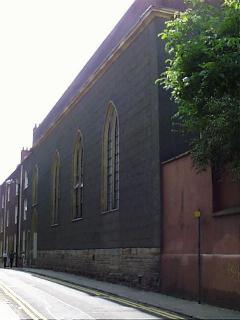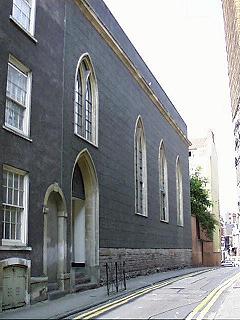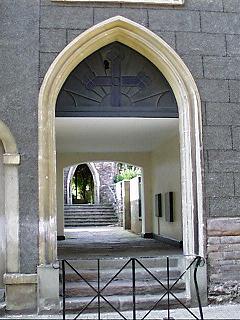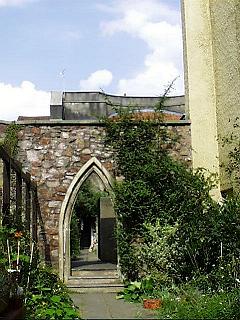|
St Joseph (TRENCHARD STREET CHAPEL) R.C. CITY Bristol |
 |
Roman Catholicism returned to Bristol for the first time in the 1740s when a Jesuit priest John Scudamore leased premises in St James Back (now Silver Street) to serve as a private mass-house. It could house 60-80 worshippers and was on the upper floor of a warehouse. It served Bristol's catholics (and craftsmen and traders from France and the Low Countries) for almost half a century, but was never shown on a map of the time. The vacated premises were purchased by the Swedenborgians in the early 1790s and a map of 1794 shows the New Jerusalem Church standing in St James Back.
The first catholic church to be built in Bristol since the Reformation was the Trenchard Lane Chapel, later Trenchard Street. It was built by Trustees, still as private premises, the chief pioneer being Lord Arundel who had bought the site in 1786. The foundation stone was laid in March 1788 and the building opened on Sunday 27th June 1790. It was dedicated to St Joseph. The interior was described as spacious with Gothick side windows and a shallow apse. However it quickly proved to be too small and the church of The Apostles (Pro Cathedral) was begun as the second church for the city. However the building ran into problems and an opportunistic purchase of the newly erected Catholic Apostolic Church (who had over-stretched themselves financially) saw St Mary on the Quay open as the second catholic church in Bristol. Worship at St Joseph continued until 19th November 1871 when it was closed and converted into St Mary's School and Meeting Room.
 |
 |
 |
The former church survived as part of the St Mary on the Quay parish property until 1978 when it was sold for redevelopment as housing. The Trenchard Street facade was kept and the rest demolished in May 1981. Today the former church entrance opens into a pleasant courtyard and steps rise to another doorway which survives, but whether in situ or resited I cannot say. From the road it seems nothing has changed and the retention of a fairly ordinary late C18 facade has to be commended at a time when the City Planning Department had let a number of other buildings disappear.
Page created 25th March 2005